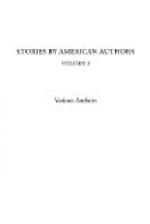Mr. T.A. Edison announced that he had invented everything which, up to that time, any one else had suggested. He invited all the reporters to Menlo Park, and, after elaborately explaining the merits of a new catarrh remedy, showed some lines on a piece of paper, which, he said, represented huge electro-magnets, which he proposed to set up along the coast, say, near Barnegat. When the enemy’s iron ships appeared, he proposed to excite these magnets, and draw the vessels on the rocks. Somebody said that this notion had been anticipated by one Sindbad the Sailor, whereupon Mr. Edison denounced that person as a “patent pirate.” He also said that these magnets would be exhibited in working order next Christmas Eve.
Professor Bell proposed the “induction balance,” as a way of recognizing the approach of the enemy’s iron vessels. He went down the Bay with his instrument, and sent back some telegrams which were alarming, until it was discovered that the professor had made a slight error in the direction from which he asserted the ships were coming, it being manifestly impossible for them to sail overland from the Pacific, as his contrivance predicted.
The condition of affairs in the city reminded one of the early days of the Rebellion. Wall Street was panicky—chiefly because of the immense depreciation in railway securities. Government four-per-cent bonds, however, had gone up to ninety-eight. Provisions were high, and, through the stoppage of European commerce, the cost of imported articles, such as dress-goods, tea, etc., became excessive. Recruiting was going on everywhere; the regiments, as fast as organized, being dispatched to different points along the sea-board, or to swell the numbers of an army under command of General Sheridan, which was preparing to sail to Key West, to invade Cuba.
During the month of March New York remained in a state of suspense. Army contractors did a brisk business; but otherwise there was little doing. News was eagerly sought. It was known that Spain was mobilizing her army and fitting out transports; but beyond this, and the dispatching of the four ironclads, which had duly reached Havana, she had taken no steps pointing toward an invasion of the United States. All the European nations had issued proclamations of neutrality, except Russia and France. England had ordered the great Spanish ironclad, “El Cid,” in which Sir William Armstrong had just placed two 100-ton guns, out of her waters inside of twenty-four hours after Spain had declared war; and this, although the vessel was in many respects unfinished. The Queen’s proclamation was most stringent against the fitting out or coaling of the vessels of either belligerent, and a special Act of Parliament was passed, inflicting penalties of the greatest severity for any violation of it. John Bull evidently proposed to pay for no more “Alabamas.”
The first great news of the war came during the first week in June. The Spanish screw corvette “Tornado,” six guns, had sailed from Cartagena for Havana. Off Cape Trafalgar she encountered the “Lancaster,” flag-ship of the United States European squadron, bearing the flag of Rear-Admiral Nicholson. The “Lancaster” carried two-eleven-inch and twenty nine-inch old-fashioned smooth-bore Dahlgren guns. The action was short, sharp, and decisive.




